
Anglers like using frog baits for bass fishing because they look real and move in a way that attracts bass. These lures imitate what bass eat, so they’re a good choice for catching these tricky fish. Fishing with frog baits is fun because they float on the water, making the bass want to bite.
Anglers often move frog baits from side to side to make them look like real frogs swimming. Frog baits are made to fish in places with many plants where bass like to stay hidden. In general, frog baits are a good and fun way to catch bass while enjoying fishing on the water’s surface.
Why Fishing with Frog Baits?
Fishing with frog baits is a game-changer for anglers. These lures look like real frogs and attract even hard-to-catch fish. Seeing a bass or pike go after a frog bait is exciting – it’s like seeing nature in action. Frog baits let you fish in tough spots like thick plants or lily pads.
The weedless design helps you move through obstacles easily, going after big fish that other baits might miss. If you want to improve your fishing and catch impressive fish, try using frog baits – you’ll be happy you did!
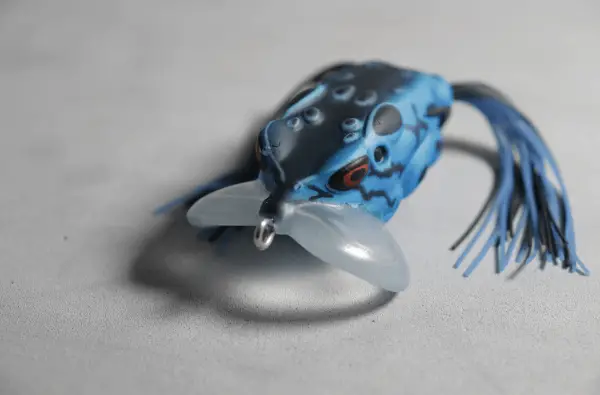
The Best Setup While Using Frog Baits
Opt for a delicate fishing rod equipped with a responsive tip to detect even the faintest nibbles from bass beneath the surface for optimal results with frog baits. The heightened sensitivity of the tip allows you to pick up on subtle movements indicating fish activity. Enhance your angling experience by utilizing a braided line, which offers superior sensitivity and durability against wear and tear.
Furthermore, using a braided line can enhance your ability to detect delicate strikes, especially when fishing with frog baits for bass. Opting for this type of line can improve your chances of success. Pairing a light rod with a braided line is ideal for using frog baits while fishing. Adjust the drag on your reel to ensure optimal performance with this setup.
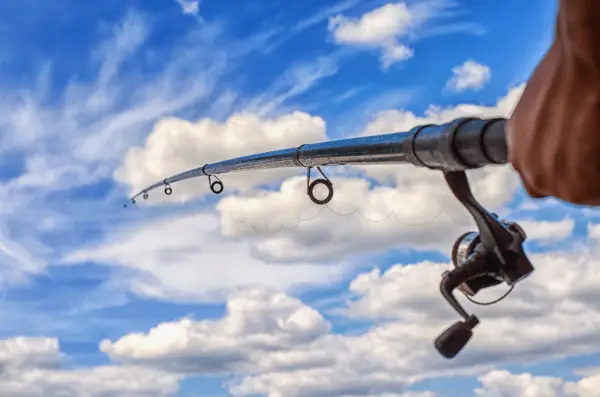
Types of Frog Baits
Soft Plastics
Anglers like using soft plastics and hard lures for frog baits. Soft plastics like rubber frogs look real and move like frogs in the water. Bass and other predators find the smooth texture of these baits very tempting.
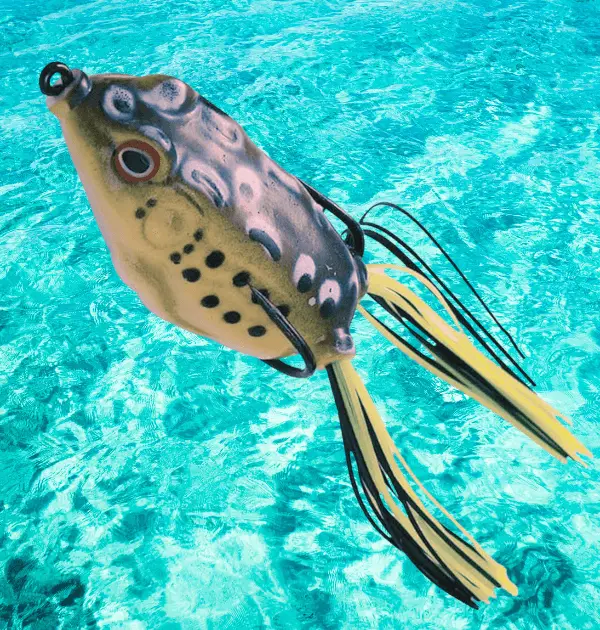
Hard Lures
Hard lures have unique shapes and colors, often with treble hooks. They splash on the water, attracting fish from far away. Anglers use hard lures in areas with lots of plants or when they want to cover a large area quickly. Choosing between soft plastics and hard lures depends on fishing conditions and personal preferences.
In addition, using different types of bait can give good results because fish react differently to each type based on weather and time of day. Both types can help you determine which works best for your fishing goals and make your fishing experiences more exciting.
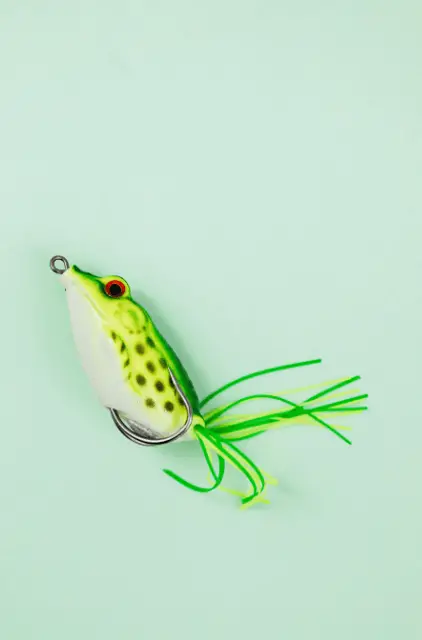
Choosing the Right Frog Bait
When picking frog bait for fishing, consider size, color, and action. Larger frogs attract bigger fish like bass or pike, while smaller frogs are better for panfish or trout. Use bright colors in murky water and natural colors in clear water to mimic the fish’s prey.
Additionally, how a frog’s bait moves is important for catching fish. Some baits move like real frogs on the water, while others make noise to attract fish. Trying different movements can help you determine what works best for fishing in various places. Choosing the right size, color, and action can help you catch big fish.
Techniques for Using Frog Baits
Casting the Bait
Topwater presentations and skipping are two effective techniques when using frog baits for bass fishing. Topwater frog fishing involves casting the bait onto the water’s surface and making it move like a real frog swimming or hopping. This method works well for catching bass in shallow water near plants and hiding spots where frogs usually are.
Skipping a Bait
Skipping a frog bait across the water can help you reach tight spots where bass hide under docks or trees. It would help if you had a rod with a fast tip for accurate casting and skipping to do this well. You can attract bass looking for an easy meal by skipping your bait into these hidden areas.
Combining topwater presentations and skilled skipping can boost your chances of catching fish with frog baits. Try different speeds and pauses to see what works best, whether fishing in open waters or thick vegetation; mastering these techniques will enhance your frog bait skills and make your fishing trips more thrilling.
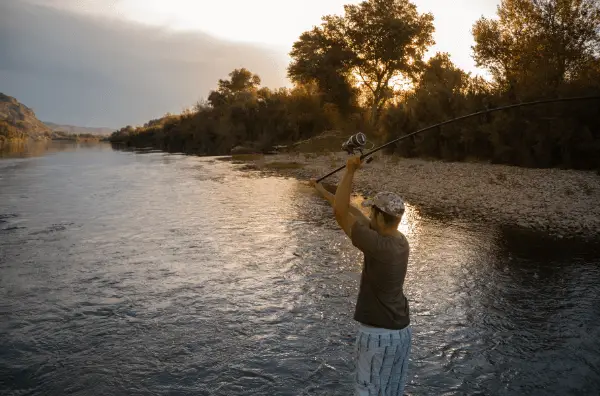
Best Fishing Conditions for Frog Baits
Fishing with these baits works best in shallow water with lots of plants. This gives frogs and other prey good hiding places, attracting fish looking for food. Weeds, lily pads, and grassy areas are perfect spots for frogs, making it easier for anglers to use frog baits successfully.
Fish are active near the surface in shallow water, especially in the early morning or late evening. Frog-style lures can mimic frog movements well in these times. Predatory fish in shallow areas respond well to frog baits. Anglers should cast these lures near logs, branches, and weed beds to catch bass and other fish.
Furthermore, to catch big fish using these fishing baits, look for spots with many plants in shallow water. This takes skill and planning, but it can lead to great results. By focusing on places that are like where frogs live, you improve your chances of catching a big fish and having a fun time fishing.
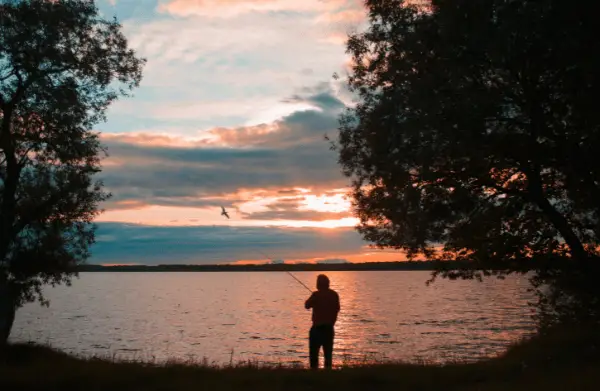
Common Mistakes to Avoid
Anglers often make two common mistakes when using frog lures: not setting the hook properly and moving the bait too much. Setting the hook properly is important for successful fishing with frog lures on the surface. It requires a precise technique. If you react too slowly or set the hook too hard, you may miss chances to catch fish.
Also, avoid moving the bait too much when using frog lures, as too much movement can scare fish. Try to find a balance between attracting fish and not scaring them away.
Conclusion
Frog baits are important for bass fishing. They help catch big bass in different water conditions. Anglers can improve their fishing by learning about these fishing tools, mastering fishing techniques, and focusing on safety and the environment.
Anglers like using frog baits for bass fishing because they look real and move in a bass-like way. These lures copy what bass eat, so they work well for catching them. Frog lures float on the water and attract bass to bite. Use these lures to catch big bass and have fun on your next fishing trip.
FAQs
Q. Can frog baits help me catch more fish in dense vegetation?
A. Absolutely! The weedless design of these lures allows you to easily navigate obstacles, giving you access to those hard-to-reach spots where trophy fish hide.
Q. Are frog baits suitable for beginners or better for experienced anglers?
A. Anglers of all skill levels can use frog baits. Their versatile design and ease of use make them a great choice for beginners looking to up their fishing game.
Q. How do I know which frog bait is best for the type of environment I want to fish in?
A. Consider factors like the size and color of the bait and the type of vegetation or cover present in the area. Experimenting with different options can help you find what works best for your specific fishing conditions.
Q. Do frog baits work well in open water, or are they specifically designed for dense vegetation?
A. While frog baits excel in challenging environments like dense vegetation or lily pads, they can also be effective in open water, especially around structures where fish like to hide.
Q. Can I use frog baits in saltwater environments, or are they only meant for freshwater fishing?
A. These fishing baits are primarily designed for freshwater fishing, but some models may work well in brackish water environments. It’s always best to check the manufacturer’s recommendations before using them in saltwater.
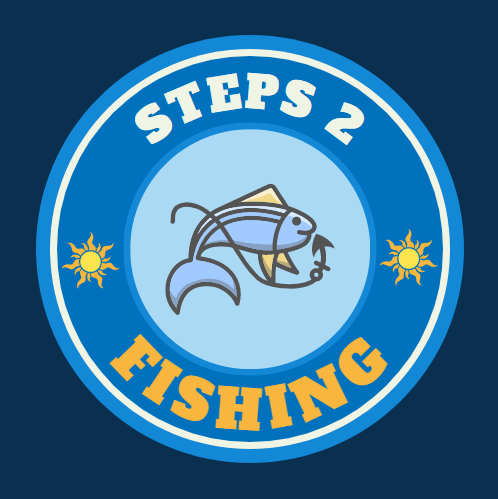

Leave a Reply